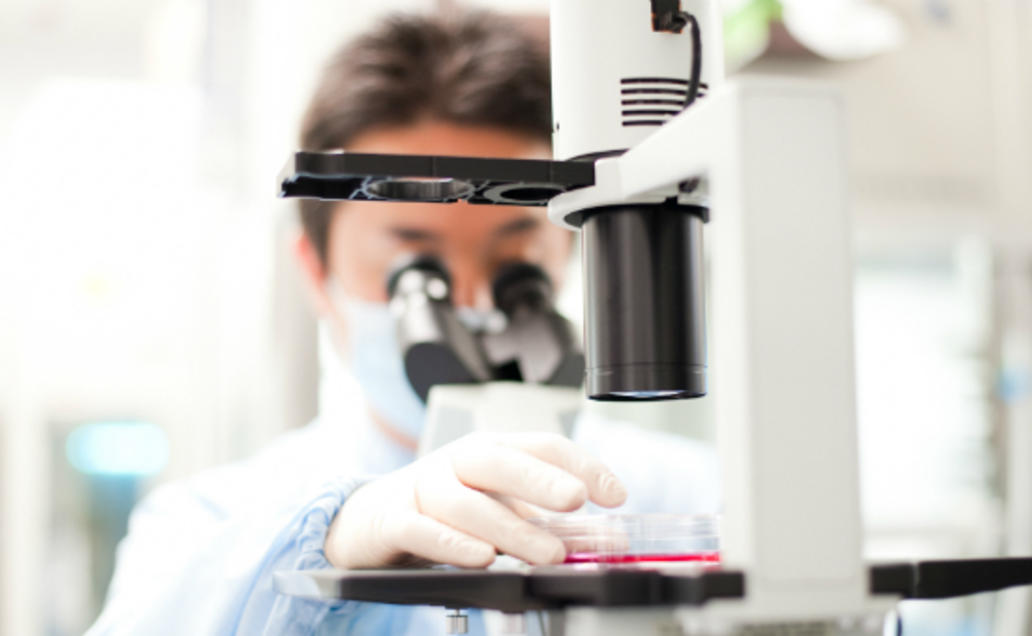Resources
The Michael J. Fox Foundation makes data and biospecimens available from select Parkinson’s studies for discovery and validation research. Visit our Data page for resources from these and other studies. We also fund promising projects that use these data and biospecimen collections.
NOTE: If you have recently ordered biosamples, our biorepository has now resumed shipments and is providing estimated ship dates as well as confirming your ability to receive samples.
16 Types of Samples Available
-
Parkinson’s Progression Markers InitiativePopulation:De novo, unmedicated PD; prodromal; genetic; controlsRequest Samples For:Biomarker validation; Disease Progression; Understand genetic PDCohort Size1,500+
-
DNA
-
RNA
-
CSF
-
Whole or Pellet Blood
-
Plasma
-
Serum
-
Urine
-
Saliva
-
Peripheral Mononuclear Blood Cells
-
Fibroblasts
-
Induced Pluripotent Stem Cells
-
Skin Tissue
-
Colon Tissue
-
Sub-Mandibular Gland Tissue
-
-
BioFINDPopulation:Moderate to advanced PD and controlsRequest Samples For:Biomarker Discovery; Biomarker ReplicationCohort Size~200
-
DNA
-
RNA
-
CSF
-
Whole or Pellet Blood
-
Plasma
-
Serum
-
Urine
-
Saliva
-
Peripheral Mononuclear Blood Cells
-
Fibroblasts
-
Induced Pluripotent Stem Cells
-
Skin Tissue
-
Colon Tissue
-
Sub-Mandibular Gland Tissue
-
-
LRRK2 Cohort ConsortiumPopulation:GeneticRequest Samples For:Biomarker Discovery; Biomarker Replication; Disease Progression; Understand genetic PDCohort Size3,200
-
DNA
-
RNA
-
CSF
-
Whole or Pellet Blood
-
Plasma
-
Serum
-
Urine
-
Saliva
-
Peripheral Mononuclear Blood Cells
-
Fibroblasts
-
Induced Pluripotent Stem Cells
-
Skin Tissue
-
Colon Tissue
-
Sub-Mandibular Gland Tissue
-
-
DATATOPPopulation:Early, unmedicated PDRequest Samples For:Biomarker Discovery; Biomarker Replication; Disease Progression; Pharmacogenetics/pharmacodynamics;Cohort Size800
-
DNA
-
RNA
-
CSF
-
Whole or Pellet Blood
-
Plasma
-
Serum
-
Urine
-
Saliva
-
Peripheral Mononuclear Blood Cells
-
Fibroblasts
-
Induced Pluripotent Stem Cells
-
Skin Tissue
-
Colon Tissue
-
Sub-Mandibular Gland Tissue
-
-
24-Hour Biofluid SamplingPopulation:Early to moderate PD and controlsRequest Samples For:Assay development/ validation; Biomarker Discovery; Biomarker Replication; Diurnal fluctuationCohort Size~30
-
DNA
-
RNA
-
CSF
-
Whole or Pellet Blood
-
Plasma
-
Serum
-
Urine
-
Saliva
-
Peripheral Mononuclear Blood Cells
-
Fibroblasts
-
Induced Pluripotent Stem Cells
-
Skin Tissue
-
Colon Tissue
-
Sub-Mandibular Gland Tissue
-
-
Arizona Parkinson's Disease ConsortiumPopulation:PD, other neurodegenerative diseases, neurologically normal elderly controlsRequest Samples For:Clinicopathological correlationsCohort Size450
-
Postmortem CSF
-
Postmortem Blood
-
Postmortem Tissue
-
-
Nilo-PDPopulation:moderate/advanced PDRequest Samples For:Assay development, biomarker discovery, pharmacogenetics/pharmacodynamics, biomarker replication & validationCohort Size76
-
DNA
-
RNA
-
CSF
-
Whole or Pellet Blood
-
Plasma
-
Serum
-
Urine
-
Saliva
-
Peripheral Mononuclear Blood Cells
-
Fibroblasts
-
Induced Pluripotent Stem Cells
-
Skin Tissue
-
Colon Tissue
-
Sub-Mandibular Gland Tissue
-
-
LRRK2 PBMC & Urine BiobankPopulation:Genetic PDRequest Samples For:Assay development/ validation; Biomarker Discovery; Biomarker Replication; Biomarker validation; Understand genetic PDCohort Size~150
-
DNA
-
RNA
-
CSF
-
Whole or Pellet Blood
-
Plasma
-
Serum
-
Urine
-
Saliva
-
Peripheral Mononuclear Blood Cells
-
Fibroblasts
-
Induced Pluripotent Stem Cells
-
Skin Tissue
-
Colon Tissue
-
Sub-Mandibular Gland Tissue
-
-
S4Population:early, moderate, advanced Parkinson's Disease patients and Healthy ControlsRequest Samples For:Biomarker Discovery; Biomarker Replication; Biomarker validation studies related to a-synucleinCohort Size81
-
DNA
-
RNA
-
CSF
-
Whole or Pellet Blood
-
Plasma
-
Serum
-
Urine
-
Saliva
-
Peripheral Mononuclear Blood Cells
-
Fibroblasts
-
Induced Pluripotent Stem Cells
-
Skin Tissue
-
Colon Tissue
-
Sub-Mandibular Gland Tissue
-
-
STEADY PD - 3Population:early idiopathic PD not requiring dopaminergic therapyRequest Samples For:Pharmacogenetics/pharmacodynamic studiesCohort Size366
-
DNA
-
RNA
-
CSF
-
Whole or Pellet Blood
-
Plasma
-
Serum
-
Urine
-
Saliva
-
Peripheral Mononuclear Blood Cells
-
Fibroblasts
-
Induced Pluripotent Stem Cells
-
Skin Tissue
-
Colon Tissue
-
Sub-Mandibular Gland Tissue
-
-
SURE-PD3Population:early Parkinson's DiseaseRequest Samples For:Pharmacogenetics/pharmacodynamic studiesCohort Size298
-
DNA
-
RNA
-
CSF
-
Whole or Pellet Blood
-
Plasma
-
Serum
-
Urine
-
Saliva
-
Peripheral Mononuclear Blood Cells
-
Fibroblasts
-
Induced Pluripotent Stem Cells
-
Skin Tissue
-
Colon Tissue
-
Sub-Mandibular Gland Tissue
-
-
SURE-PD (Phase 2)Population:early Parkinson's DiseaseRequest Samples For:Pharmacogenetics/pharmacodynamic studiesCohort Size75
-
DNA
-
RNA
-
CSF
-
Whole or Pellet Blood
-
Plasma
-
Serum
-
Urine
-
Saliva
-
Peripheral Mononuclear Blood Cells
-
Fibroblasts
-
Induced Pluripotent Stem Cells
-
Skin Tissue
-
Colon Tissue
-
Sub-Mandibular Gland Tissue
-
-
PARSPopulation:At risk for Parkinson's diseaseRequest Samples For:Biomarker Replication; Biomarker validation; Disease Progression;Cohort Size301
-
DNA
-
RNA
-
CSF
-
Whole or Pellet Blood
-
Plasma
-
Serum
-
Urine
-
Saliva
-
Peripheral Mononuclear Blood Cells
-
Fibroblasts
-
Induced Pluripotent Stem Cells
-
Skin Tissue
-
Colon Tissue
-
Sub-Mandibular Gland Tissue
-
-
FS-ZonePopulation:early Parkinson's DiseaseRequest Samples For:Pharmacodynamics/pharmacogenetic studiesCohort Size217
-
DNA
-
RNA
-
CSF
-
Whole or Pellet Blood
-
Plasma
-
Serum
-
Urine
-
Saliva
-
Peripheral Mononuclear Blood Cells
-
Fibroblasts
-
Induced Pluripotent Stem Cells
-
Skin Tissue
-
Colon Tissue
-
Sub-Mandibular Gland Tissue
-
-
CERE-120Population:Parkinson's diseaseRequest Samples For:Assay development, biomarker discovery, pharmacodynamics/pharmacogenetics.Cohort Size148
-
DNA
-
RNA
-
CSF
-
Whole or Pellet Blood
-
Plasma
-
Serum
-
Urine
-
Saliva
-
Peripheral Mononuclear Blood Cells
-
Fibroblasts
-
Induced Pluripotent Stem Cells
-
Skin Tissue
-
Colon Tissue
-
Sub-Mandibular Gland Tissue
-
-
AVE-8112Population:Parkinson's diseaseRequest Samples For:Assay development, biomarker discovery, pharmacodynamics/pharmacogeneticsCohort Size13
-
DNA
-
RNA
-
CSF
-
Whole or Pellet Blood
-
Plasma
-
Serum
-
Urine
-
Saliva
-
Peripheral Mononuclear Blood Cells
-
Fibroblasts
-
Induced Pluripotent Stem Cells
-
Skin Tissue
-
Colon Tissue
-
Sub-Mandibular Gland Tissue
-

Get Research Updates
Join our email list to receive updates on new funding opportunities, resources (tools, datasets, biospecimens) and relevant news to accelerate your research.